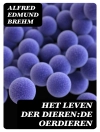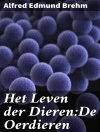Virtual palaeontology, the use of interactive three-dimensional
digital models as a supplement or alternative to physical specimens
for scientific study and communication, is rapidly becoming
important to scientists and researchers in the field. Using
non-invasive techniques, the method allows the capture of large
quantities of useful data without damaging the fossils being
studied
Techniques for Virtual Palaeontology guides
palaeontologists through the decisions involved in designing a
virtual palaeontology workflow and gives a comprehensive overview,
providing discussions of underlying theory, applications,
historical development, details of practical methodologies, and
case studies. Techniques covered include physical-optical
tomography (serial sectioning), focused ion beam tomography, all
forms of X-ray CT, neutron tomography, magnetic resonance imaging,
optical tomography, laser scanning, and photogrammetry.
Visualization techniques and data/file formats are also discussed
in detail.
Readership: All palaeontologists and students
interested in three-dimensional visualization and analysis.
New Analytical Methods in Earth and Environmental
Science
Because of the plethora of analytical techniques now available,
and the acceleration of technological advance, many earth
scientists find it difficult to know where to turn for reliable
information on the latest tools at their disposal, and may lack the
expertise to assess the relative strengths or limitations of a
particular technique. This new series will address these
difficulties by providing accessible introductions to important new
techniques, lab and field protocols, suggestions for data handling
and interpretation, and useful case studies. The series represents
an invaluable and trusted source of information for researchers,
advanced students and applied earth scientists wishing to
familiarise themselves with emerging techniques in their field.
This enhanced e-book offers the following features:
* Full colour and high quality graphics
* Full searchability
* Internal links to glossaries, cross-references, figures and
tables and other pedagogy
* External links to websites, including DOI linking for
references and further reading
เกี่ยวกับผู้แต่ง
Mark Sutton is a Senior Lecturer at Imperial College,
London, UK specializing in Palaeozoic invertebrate palaeobiology
and in three-dimensional visualization techniques. He is the
primary author of the SPIERS software suite for palaeontological 3D
reconstruction.
Imran Rahman is a Research Fellow at The University of Bristol,
UK. He specializes in the origin and early evolution of
echinoderms, and uses virtual palaeontology to study the form and
function of fossil taxa.
Russell Garwood is an 1851 Royal Commission Research Fellow
based at The University of Manchester, UK. He uses X-ray techniques
to study fossils, primarily early terrestrial arthropods. He is the
secondary author of the SPIERS software suite.












